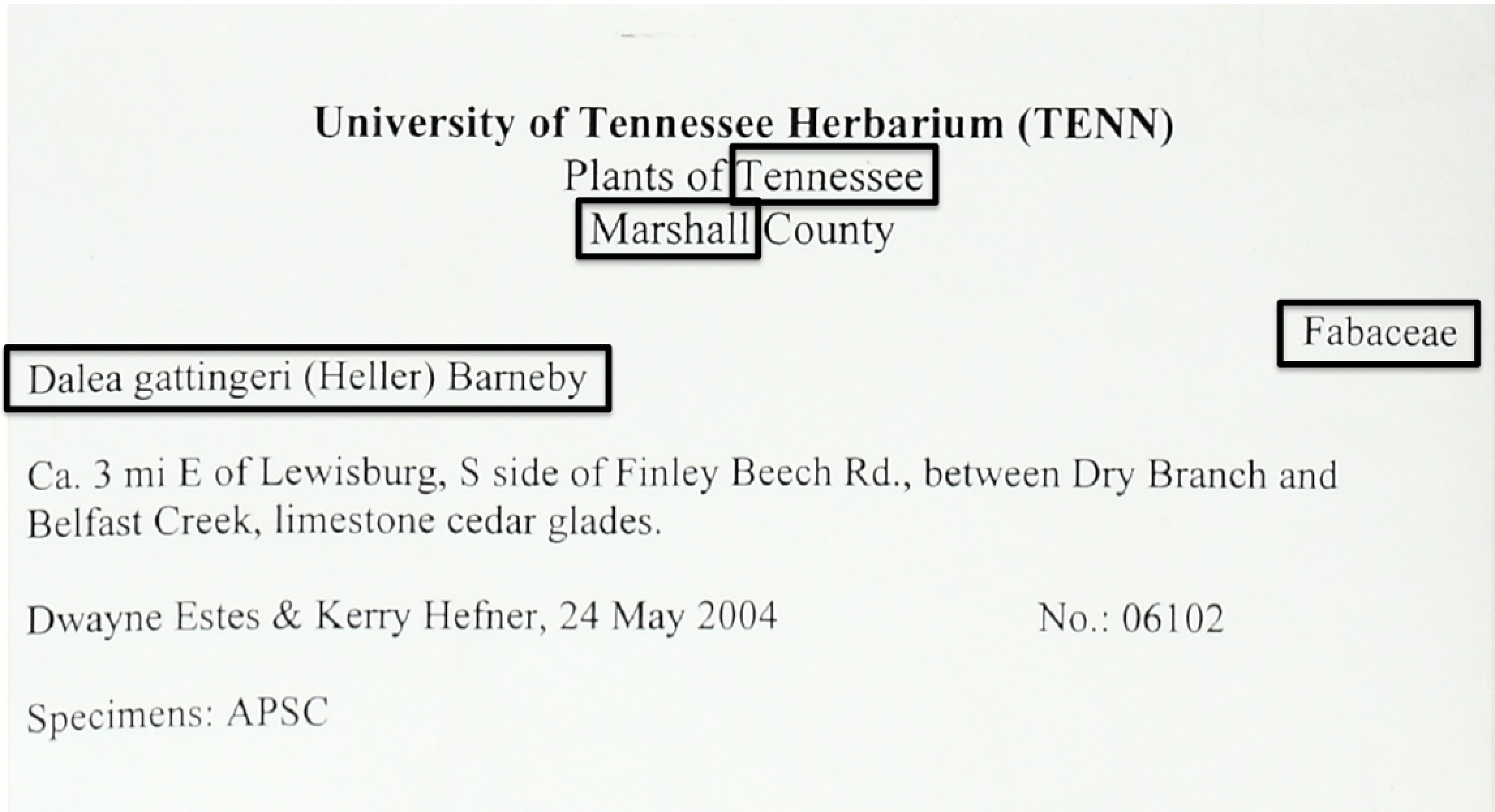Directions for digitizing herbarium specimens
VERY IMPORTANT: register or sign in
Before you begin volunteering, please register (if it’s your first time) or login at the upper right-hand corner of the Notes from Nature home page OR the Notes from Nature Southeastern U.S. Biodiversity home page. Creating an account allows you to participate as a volunteer with Notes from Nature. Please be sure to log in every time you volunteer.
Start at the very beginning: Notes from Nature “transcribe museum records” homepage
Begin at the Notes from Nature website and click through to “Plants.” You will see icons for different projects. These are known as “Expeditions."
Click on the icon for “Notes from Nature Southeastern U.S. Biodiversity” expedition. Each expedition is tailored toward a specific region or state. In this case SGI is also adding another layer to our expeditions by making them grassland-specific. How do we do this? We develop a list of "indicator species" that mostly occur in a given habitat type. For example, Gattinger's Prairie Clover (Dalea gattingeri) is found only in limestone glades and barrens habitat. If we select this species and, say, 50 others with similar habitat preferences then we can theoretically image and database most of the specimens that have been collected from that habitat within a given region. We’ll then have the beginnings of a limestone glades and barrens map! Most expeditions are capped at about 3,000 specimens.
Select the SGI project labeled “Southeastern Grasslands Initiative: Plants of Limestone Glades & Barrens” and you are ready to begin!
OR, cut to the chase, go directly to our current SGI expedition After logging in
Go to “Southeastern Grasslands Initiative: Plants of Limestone Glades & Barrens.”
Congratulations! You have now begun your expedition!
Now, a specimen appears on the left side of your screen and on the right is a place to type information. When you first enter, an excellent little tutorial will also pop up (shown above with red arrow), which leads you through the steps for digitizing the specimen. Quickly review the tutorial.
How to read a specimen label
After X-ing out of the tutorial box, you can examine the specimen's label in the lower right corner by using the scroll function. From the label, you'll need to identify the "Location" and "Habitat" and other bits of information.
You can always return to the tutorial by toggling to the “TUTORIAL” tab on the right-hand side of the page. When you are ready to go to work, toggle back to the TASK tab.
This is a typical specimen label. As part of the SERNEC digitization effort, the state, county, family, and scientific name have already been recorded (shown in boxes below).
Notes from Nature asks you to help record the other important bits of information on the label such as the location of where the specimen was found (in red box), the habitat (yellow box), who collected it (green box), date of collection (blue box), and the collection number of the specimen (purple box).
Once you have completed entering the various bits of information, click "Done" and you have transcribed your first specimen label!! Ka-ching! That’s a great feeling. Real progress for historical conservation knowledge, right from the comfort of your own chair!
Thanks to your efforts, we will be able to map and identify important grassland remnants. As we find many of these sites that have not been visited in decades, our volunteers will be able to help go back to these sites and record what is still there and lead efforts to collect seeds and ultimately secure these sites.
You’re all ready to get started now to help us completely digitize SGI’s Plants of Limestone Glades & Barrens!
If you are interested in learning more about the history and reasons behind this massive effort, please read Why digitize herbarium specimens?
*This project is possible thanks to the National Science Foundation who funded the work to image and skeletally database millions of specimens across more than 120 partner institutions during the past several years.







